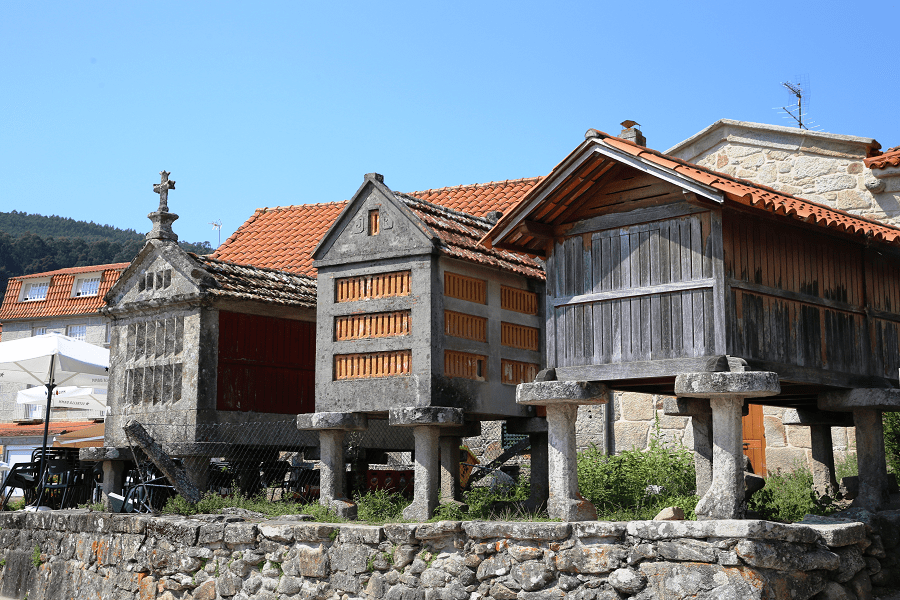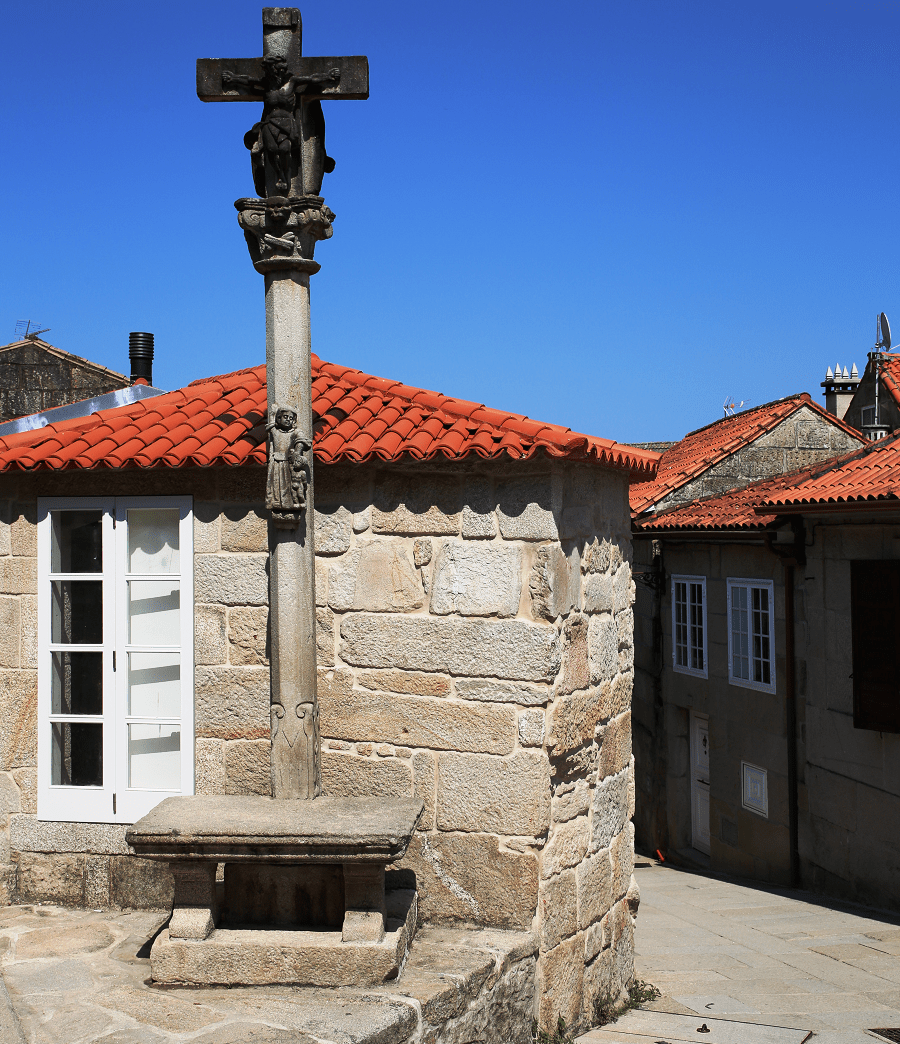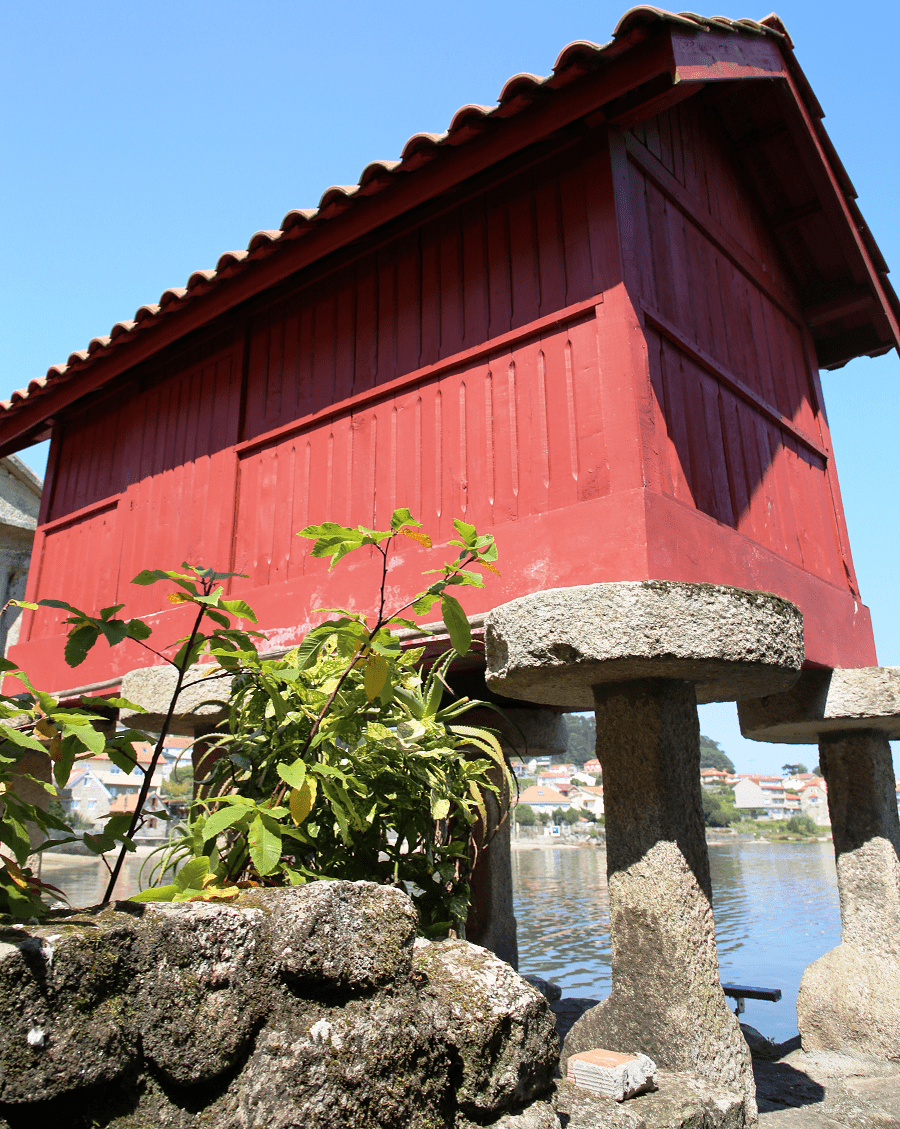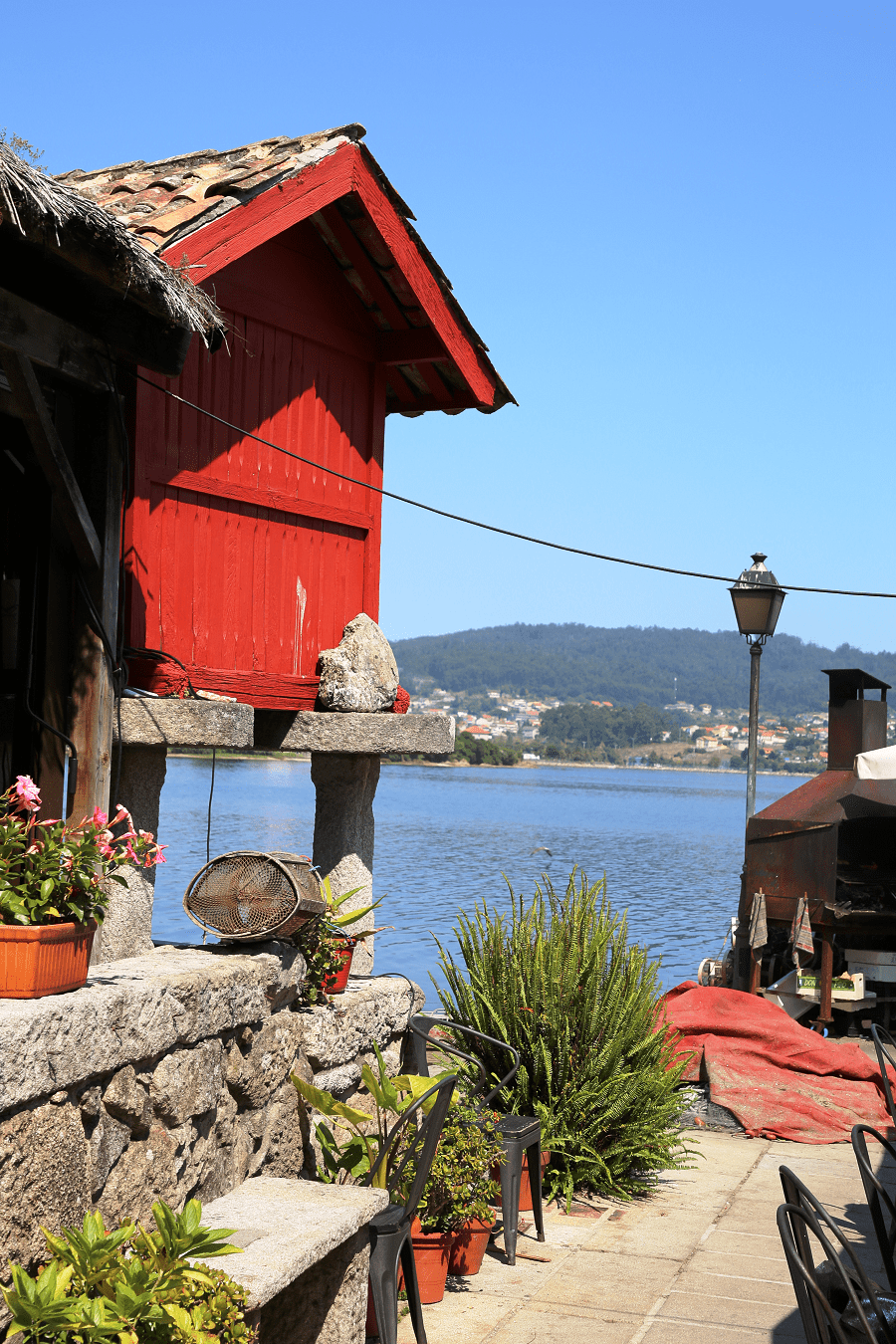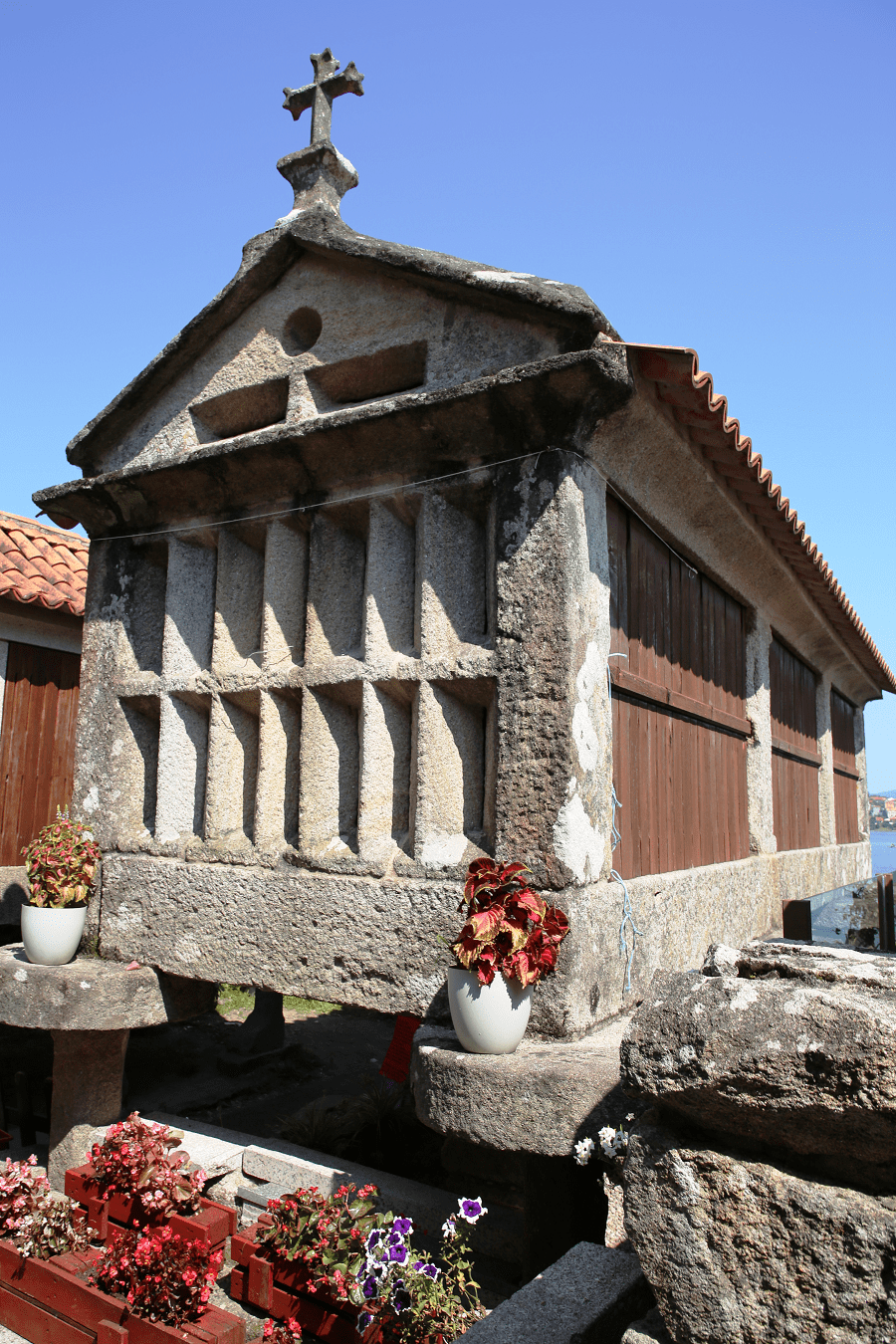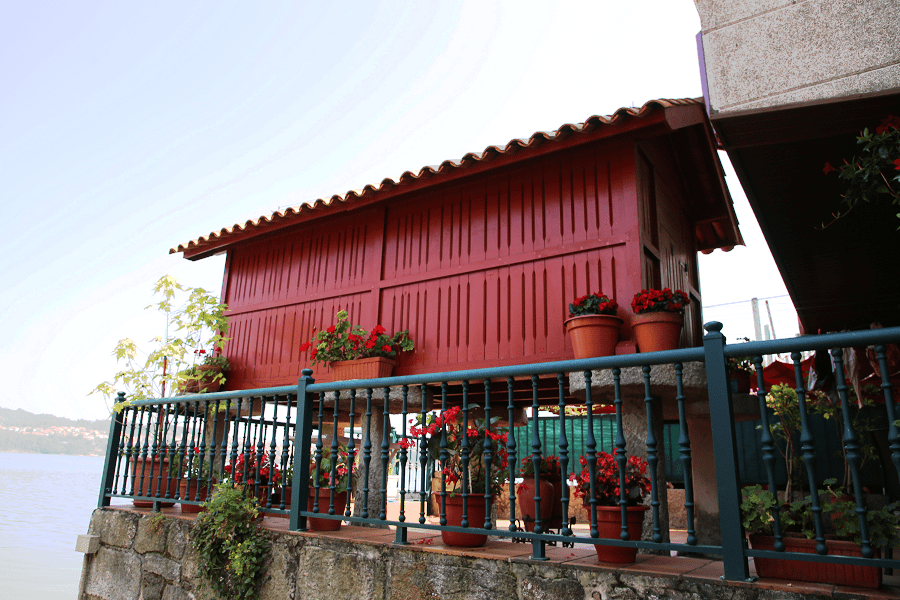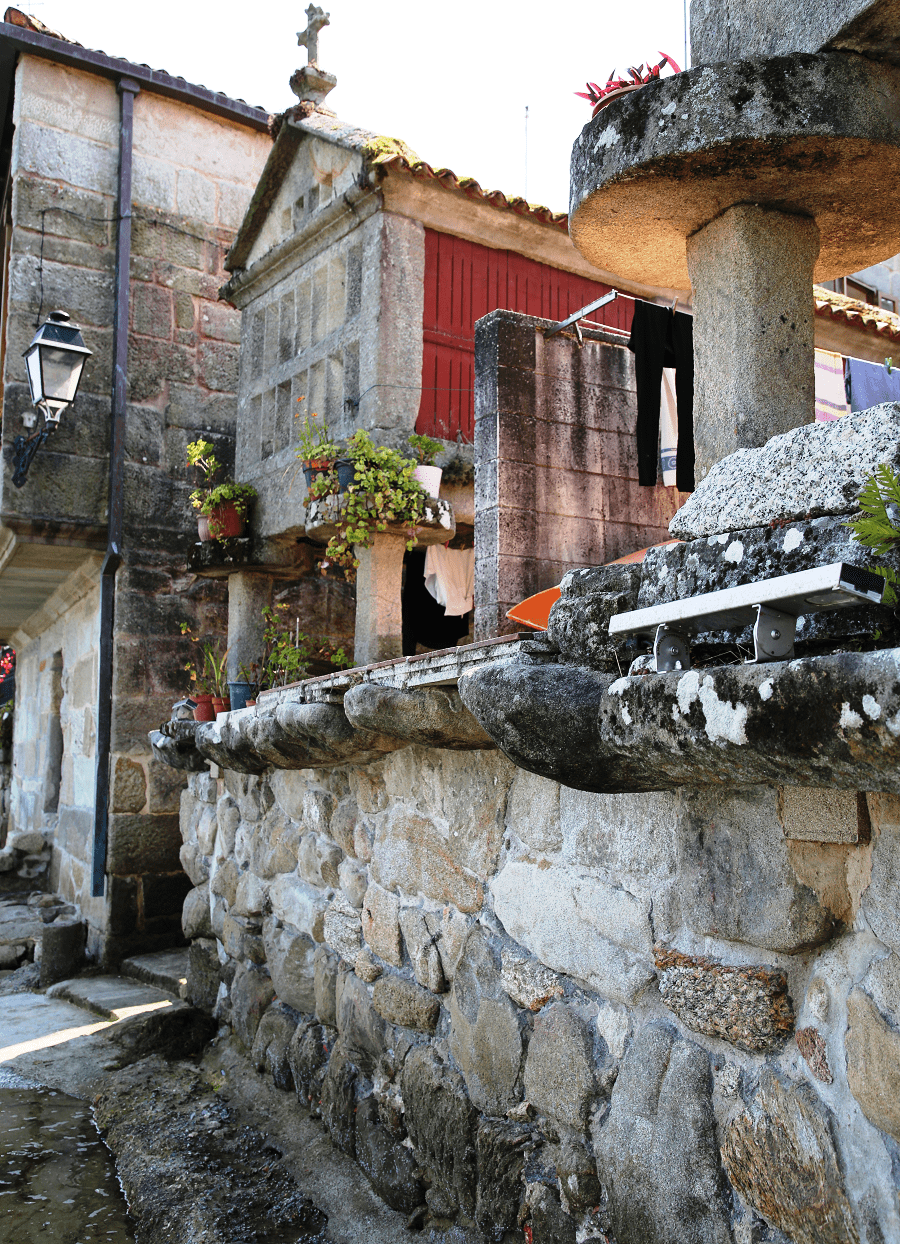Combarro is a district and a parish in the municipality of Poio, in the province of Pontevedra, Galicia (Spain).
It is a fishing village known for its stone granaries (hórreos), built on stilts, dates back to the 18th century.
The village is a popular part of the Rías Baixas costa of the Atlantic resorts of Spain.
It was declared an asset of cultural interest as a Historic Site.
What is a hórreo?
A hórreo is a construction designed to store and preserve food away from moisture and animals to keep it in an optimal state for consumption. It is characterized by being raised on pillars to prevent the entry of moisture and animals (especially mice and other rodents) from the ground and by allowing ventilation through slots in the perimeter walls.
The use of the granary extends over a good part of the north of the Iberian Peninsula. Currently they are especially abundant in Galicia and part of Asturias, although there are also examples in the provinces of León and Zamora (Castile and León), in Cantabria and in some areas of the Basque Autonomous Community and northern Portugal.
In these areas, the use of the granary is explained by the early arrival of a long, cold and humid winter that once required early harvests.
How to get to?
From Pontevedra 18 min (7.8 km) via PO-308
From Santiago de Compostela 50 min (68.4 km) via AP-9
From Madrid 5 hr 58 min (620 km) via A-6 and A-52
Main information
Area: 3 sq. km
GPS coordinates: 42°25′55″N 8°42′23″W
Language: Spanish, Galician
Population: 1819
Currency: Euro
Visa: Schengen
Time: Central European UTC +1, in summer +2
See here best sea and ocean resorts of France and Spain (223 objects)



